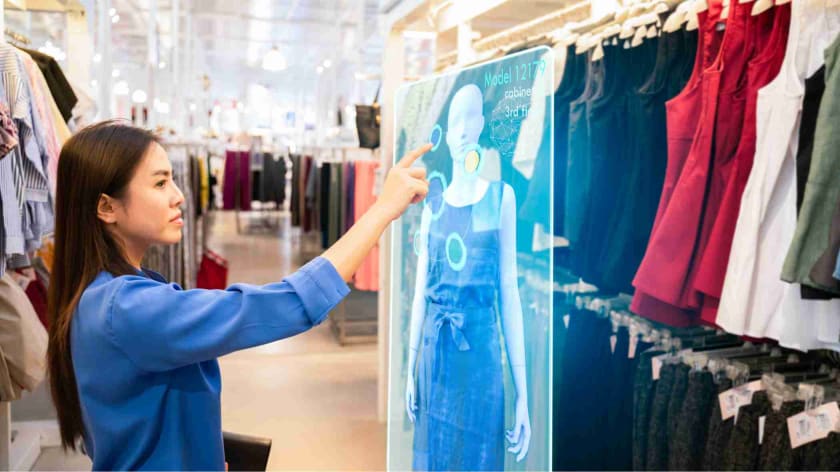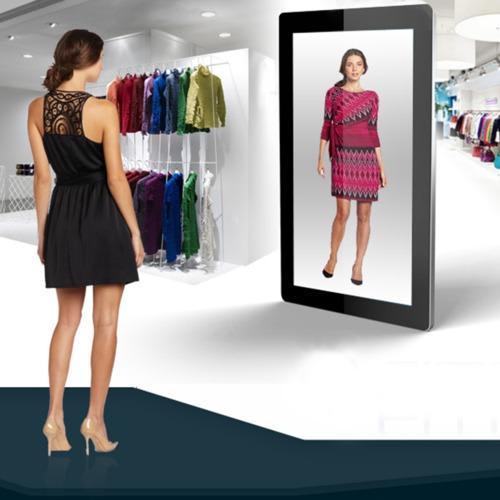What Is Virtual Clothing And How Is It Reshaping The Apparel Industry?



Virtual clothing, digital fashion, contactless couture – no matter what you call it, the gist of the trend remains the same – the future of fashion is here! With the entire world reeling under lifestyle changes due to the pandemic, this new trend proving to be the solution of the century has engulfed the fashion world. But what exactly is virtual clothing, and why is it the best solution for the fashion industry? Let’s take a look.
What is Virtual Clothing?
In simple words, virtual clothing is the amalgamation of old fashion with new-age technology. In this fashion-meets-digital scenario, clothes cease to exist physically, instead opting for a visual representation constructed using 3D software, AR-based (augmented reality) computer technologies.
This interplay of digital technology with couture gained momentum while the COVID-19 pandemic wreaked havoc in the fashion industry. 90% of the fashion fraternity was suffering economic losses with plummeting sales and loss of jobs. Thus, experts in the community came together to harness the volatile potential of the digital era and create contactless couture that paved the way for virtual catwalks, augmented showrooms, and digitally modified clothing to recover from their losses.
How Did the Virtual Clothing Trend Begin?

Well, we can presume that writer Hans Christian Anderson thought of the earliest examples of virtual clothing in his story, ‘The Emperor Has No Clothes’. In his tale, he pioneered the idea of clothes that were not visible in the physical realm. While the two weavers used their wit to trick the emperor into thinking that only those who fit their position would see the clothes, perhaps the idea was not too far from the truth.
The concept of virtual clothing became a reality in recent times by creating a digital dress called Iridescence. The design was the result of a collaboration between the Dutch start-up, The Fabricant, Dapper Labs, creator Johanna Jaskowsa, and augmented reality artists, who brought together their creative minds and came with a design that broke through the traditional concepts of fashion and gave rise to a new and improved version, suited for a world residing in the new normal.
How Is Virtual Clothing Created?
Virtual clothing is created with the help of Information and Communication Technologies (ICTs). ICTs have become deeply embedded in the fashion industry and customer experience at three levels of communication.
- Information and Communication technologies are utilized to design and create new fashion merchandise and allow the industry to leverage new digital technologies.
- ICTs actively impact the sales and distribution of fashion merchandise by allowing customers to voice their opinions and increasing the buzz around new products.
- These ICTs are designed to be used extensively in communication endeavors with all pertinent stakeholders, thereby contributing to the creation of the fashion world.
Top Brands Pioneering in the World of Virtual Clothing
As soon as the popularity of virtual clothing gained momentum, new brands and companies jumped into the playing field, trying to create a niche for themselves by transforming the old way of designing clothes. Dreams began to become a reality as innovation became a priority. Soon, brands were catering to the sole purpose of providing digital dresses to customers while challenging traditional clothing ideas. Some of the top companies and brands catering to the needs of the contactless fashion industry are:
- The Fabricant: Undoubtedly, the pace-setter of the virtual clothing world, Kerry Murphy and Amber Jae Slooten’s ‘The Fabricant’ is the most recognized brand for digital dressing. The brand has established high-end collab contracts with industry top shots like Tommy Hilfiger and Soorty to create fashion-free virtual fashion items that encourage more people to explore the genre.
- Carlings: Norwegian fashion brand has established itself as a big-wig industry for virtual clothing. The company consistently designs out-of-the-box digital couture that finds patrons amongst influencers and fashion enthusiasts alike, selling out every instance.
- Tribute Brand: Although new in digital fashion, Tribute Brand is no amateur in designing virtual dresses. Taking inspiration from popular video games like Tekken and Grand Theft Auto, this Croatian brand is a perfectionist in the art of making ‘contactless cyber fashion’.
- Moschino: Already a big name in the fashion industry, Moschino jumped into the virtual clothing bandwagon with The Moschino x The Sims Capsule Collection. The designs made their way into virtual reality with an in-game launch on The Sims 4, The Sims Mobile, and The Sims FreePlay games.
How is Virtual Clothing Reshaping the Fashion Industry?

Virtual clothing is proving to be a revolutionary innovation in the world of fashion.
Why?
Because it solves several new world problems by just existing. Some of the significant ways in which virtual fashion is reshaping the clothing industry are:
- It actively addresses the issues of mass production and the waste generated through these methods. The idea of unreal clothes ensures that the global waste production of the fashion industry becomes history.
- It promotes creating digital personas where people can communicate through AR games while also inventing new avatars for themselves.
- Reduces the rates of return during online shopping by allowing customers to digitally try the clothes before purchase. The same idea can also be applied while shopping at retail stores where virtual try-on reduces the time spent in trial rooms.
Augmented fashion and virtual clothing are estimated to have a massive impact on the future of fashion, promising to be the next big trend that everyone will be going gaga over. In a world where physical contact has become a distant memory, clothes will cease to become a definition of man or woman. It will start defining their virtual avatars and digital personas.



















